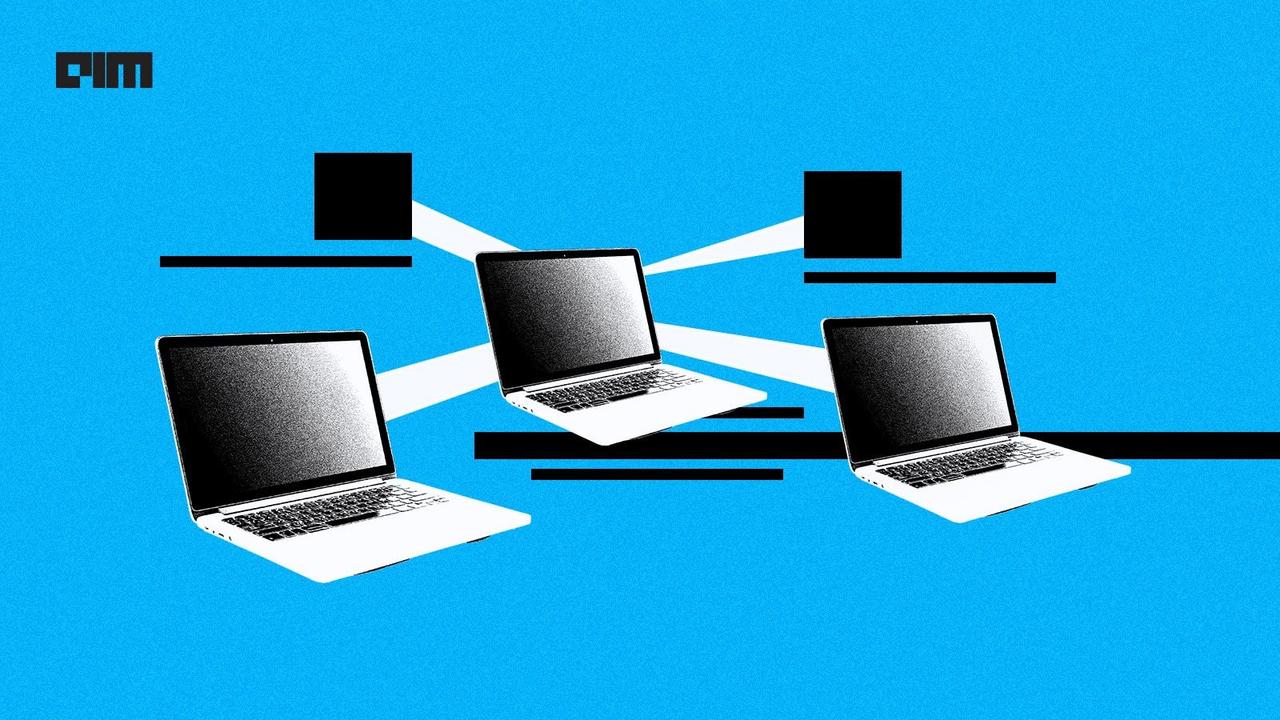Model Context Protocol (MCP): Revolutionizing AI Integration and Tool Interaction
2 Sources
2 Sources
[1]
Model Context Protocol (MCP) Explained With Code Examples)
What if the way AI agents interact with tools and resources could be as seamless as browsing the web? Imagine a world where developers no longer wrestle with custom-built adapters or fragmented integration processes, and AI systems effortlessly connect with APIs, databases, and services. Enter the Model Context Protocol (MCP) -- a new framework poised to redefine how AI agents handle complex tasks. By introducing a standardized approach to integration, MCP eliminates inefficiencies, enhances scalability, and simplifies workflows. It's not just a technical upgrade; it's a paradigm shift that could transform the future of AI-driven automation. In this exploration, Assembly AI unpack the core principles and benefits of MCP, revealing how it addresses long-standing challenges in AI-agent integration. From reducing developer workloads to allowing seamless interoperability, MCP offers a unified solution to some of the most pressing issues in AI development. You'll also discover real-world examples that illustrate its potential, such as AI agents performing intricate workflows without the need for custom code. Whether you're a developer, a service provider, or simply curious about the next evolution in AI, this journey into MCP will leave you rethinking what's possible in the realm of automation and innovation. MCP was developed to standardize the interaction between AI agents and external tools or services. Traditionally, developers have relied on custom-built adapters for each service, which increases complexity, maintenance demands, and development time. MCP eliminates these challenges by introducing a unified protocol that enables seamless connections between AI agents and diverse resources. This standardization not only reduces inefficiencies but also unlocks new opportunities for automation and task execution. By providing a consistent framework, MCP enables developers to focus on creating innovative AI solutions rather than managing the intricacies of integration. It also fosters a more collaborative ecosystem where service providers can design tools that are inherently compatible with AI agents, further enhancing the potential for automation and scalability. AI agents, particularly those powered by large language models (LLMs), often encounter significant hurdles when performing multi-step, high-precision, or complex tasks. Existing integration methods exacerbate these challenges by requiring bespoke solutions for each tool or service. This fragmented approach introduces several key obstacles: MCP addresses these issues by shifting the integration responsibility to service providers and offering a standardized framework. This reduces the need for translation layers, simplifies development workflows, and enhances the overall reliability of AI-agent interactions. Stay informed about the latest in Model Context Protocol (MCP) by exploring our other resources and articles. MCP employs a client-server architecture to assist interactions between AI agents and external resources. In this model, service providers manage MCP servers that expose tools and capabilities, while AI agents act as clients accessing these tools through the protocol. This architecture introduces several key advantages: For example, an AI agent using MCP can interact with a document creation tool without requiring a custom adapter for each API. This abstraction ensures that the integration process is not only more efficient but also more reliable, allowing AI agents to perform tasks with greater precision and consistency. The adoption of MCP offers several fantastic benefits that enhance the development, functionality, and scalability of AI systems: These advantages position MCP as a critical enabler for the future of AI-driven automation and tool integration, making it an essential framework for developers, service providers, and organizations alike. MCP has already demonstrated its potential in various practical scenarios, showcasing its ability to simplify tool usage and enhance AI-agent capabilities. For instance: These examples highlight how MCP simplifies the integration process, making AI agents more versatile and effective in handling diverse tasks across industries. MCP has the potential to become a foundational protocol for AI-agent ecosystems, much like HTTP/HTTPS serves as the backbone of the web. Its standardization encourages widespread adoption by service providers, fostering robust and scalable interactions between AI agents and external resources. As organizations such as OpenAI and others embrace MCP, it is likely to emerge as the universal standard for AI-agent resource integration. Looking ahead, MCP's ability to streamline integration, enhance security, and enable complex task execution positions it as a cornerstone of AI-driven automation. Its evolution will likely play a pivotal role in advancing AI capabilities, shaping interoperable ecosystems, and driving innovation across industries.
[2]
How MCP Is Transforming AI Integration Beyond APIs
Join the DZone community and get the full member experience. Join For Free As software engineers, we've spent years mastering the art of API integration. We've wrestled with REST endpoints, debugged authentication flows, and built countless adapters to make disparate systems talk to each other. But as artificial intelligence transforms from experimental technology to production necessity, we're witnessing a fundamental shift in how software systems need to communicate. However, APIs come with inherent limitations that become apparent when building intelligent systems. Traditional APIs are: These characteristics work perfectly for traditional web applications where developers control both the integration logic and user experience. However, these traits create obstacles for intelligent systems like AI agents because they need to automatically find and interact with multiple services and tools that match their workflow requirements without human assistance. Enter the Age of Intelligent Agents The rise of large language models like GPT-4 and Claude has unlocked something unprecedented: software that can reason, plan, and act autonomously. These AI agents can understand natural language instructions, break down complex tasks, and coordinate multiple operations to achieve goals. Imagine telling your AI assistant: "Analyze my team's productivity last month, schedule a review meeting with stakeholders, and prepare a summary report." This simple request requires: With traditional APIs, you'd need to pre-build integrations for each service, handle authentication for multiple systems, and write custom logic to coordinate these operations. The agent would be limited to only the integrations you've specifically coded. MCP introduces three fundamental primitives that make AI integration more powerful: 1. Tools: These are discrete functions that agents can invoke dynamically. MCP tools differ from API endpoints because they provide self-describing functionality that agents can discover during runtime. 2. Resources: Read-only data sources that agents can query for context. Agents can access documentation, configuration files, and real-time data feeds through this resource. Here's where MCP truly shines. When an AI agent starts up, it can query available MCP servers and discover their capabilities: The response might reveal dozens of available tools: The agent can then invoke these tools through a standardized protocol without needing pre-configured integrations. Real-World Implementation: Building a DevOps Assistant Let me illustrate this with a practical example. Suppose you're building an AI assistant for DevOps teams that can: This approach works, but it's brittle and requires constant maintenance. MCP operates on a client-server model using JSON-RPC 2.0 over various transport layers (stdio, HTTP, WebSocket). This design choice provides several advantages: Understanding when to use each approach is crucial: Use Traditional APIs when: Use MCP when: The Future of Intelligent Integration The integration landscape shows rapid development as we approach 2025 and future years. AI agents continue to advance in complexity so they can execute advanced operations autonomously. The changing environment requires organizations to develop fresh methods for system communication and collaboration. MCP functions as more than a new protocol because it represents a complete transformation of how intelligent systems should interact with the digital world. By providing dynamic discovery, standardized communication, and built-in adaptability, MCP enables AI agents to become truly autonomous problem-solvers. Getting Started with MCP If you're ready to explore MCP in your own projects, here are some practical next steps: Conclusion: Evolution, Not Revolution MCP is to AI agents what APIs were to web applications, a foundational enabler. But where APIs expose functionality statically, MCP brings discovery, abstraction, and adaptability to the table. MCP isn't here to destroy the API ecosystem that we've spent years building. Instead, it's the next evolutionary step to bridge the gap between the static, deterministic world of traditional APIs and the dynamic, intelligent future of AI-driven applications. As developers, our job is to recognize these shifts and adapt our architectures accordingly. The companies and teams that master this transition early will have a significant advantage as AI continues to evolve and reshape how software is built and deployed. The question isn't whether MCP will replace APIs but rather how quickly we can leverage both technologies to build the intelligent systems our users increasingly expect. The future of software integration is dynamic, discoverable, and AI-native. Are you ready to build it?
Share
Share
Copy Link
The Model Context Protocol (MCP) is emerging as a game-changing framework for AI integration, offering a standardized approach to connect AI agents with external tools and services. This innovation promises to streamline development processes and enhance AI capabilities across various industries.
Introducing the Model Context Protocol (MCP)
The Model Context Protocol (MCP) is emerging as a groundbreaking framework set to transform how AI agents interact with external tools and resources. Developed to address long-standing challenges in AI integration, MCP offers a standardized approach that promises to eliminate inefficiencies, enhance scalability, and simplify workflows in AI development
1
.
Source: Geeky Gadgets
The Need for MCP in AI Integration
Traditionally, developers have relied on custom-built adapters for each service, leading to increased complexity, maintenance demands, and development time. MCP addresses these issues by introducing a unified protocol that enables seamless connections between AI agents and diverse resources
1
.The limitations of traditional APIs become apparent when building intelligent systems:
- Static and predefined
- Tightly coupled
- Lacking in self-description
These characteristics create obstacles for AI agents that need to automatically find and interact with multiple services and tools without human assistance
2
.Key Features of MCP
MCP introduces three fundamental primitives that make AI integration more powerful:
- Tools: Discrete functions that agents can invoke dynamically, providing self-describing functionality.
- Resources: Read-only data sources that agents can query for context, including documentation and real-time data feeds.
- Dynamic Discovery: AI agents can query available MCP servers and discover their capabilities during runtime
2
.
MCP Architecture and Benefits
MCP employs a client-server architecture using JSON-RPC 2.0 over various transport layers. This design offers several advantages:
- Standardization: Consistent interaction patterns across different tools and services.
- Flexibility: Support for multiple transport mechanisms (stdio, HTTP, WebSocket).
- Discoverability: AI agents can dynamically explore available tools and capabilities
1
2
.
The adoption of MCP brings numerous benefits:
- Reduced development time and complexity
- Enhanced AI agent capabilities
- Improved security and access control
- Scalability and interoperability
- Future-proofing of AI systems
1
Related Stories
Real-World Applications of MCP
MCP has already demonstrated its potential in various practical scenarios:
- Document Creation: AI agents can interact with document creation tools without custom adapters.
- Data Analysis: Seamless integration with multiple data sources and analysis tools.
- DevOps Assistance: AI agents can manage complex DevOps tasks by discovering and utilizing various tools dynamically
1
2
.
The Future of AI Integration

Source: DZone
As we approach 2025 and beyond, MCP is poised to become a foundational protocol for AI-agent ecosystems, much like HTTP/HTTPS serves as the backbone of the web. Its standardization encourages widespread adoption by service providers, fostering robust and scalable interactions between AI agents and external resources
1
.MCP represents more than just a new protocol; it's a complete transformation of how intelligent systems should interact with the digital world. By providing dynamic discovery, standardized communication, and built-in adaptability, MCP enables AI agents to become truly autonomous problem-solvers
2
.As the AI landscape continues to evolve, MCP is set to play a pivotal role in advancing AI capabilities, shaping interoperable ecosystems, and driving innovation across industries. The future of software integration is dynamic, discoverable, and AI-native, with MCP leading the charge in this transformative journey.
References
Summarized by
Navi
[1]
Related Stories
MCP: The New "USB-C for AI" Unifying Rivals and Revolutionizing AI Tool Integration
28 Mar 2025•Technology

Model Context Protocol: Bridging the Gap Between AI Models and Real-World Applications
02 Jun 2025•Technology

Model Context Protocol emerges as the missing layer connecting Agentic AI to real-world systems
17 Dec 2025•Technology

Recent Highlights
1
Meta acquires Manus for $2 billion, adding revenue-generating AI agents to its platforms
Business and Economy

2
China proposes world's strictest AI chatbot rules to prevent suicide and emotional manipulation
Policy and Regulation

3
Deepfakes cross indistinguishable threshold as voice cloning and video realism surge 900%
Technology


